
In the last chapter, you looked at a few different types of charts and graphs likely to show up on the Math Test. Another way data can be represented is with a graph in the xy-plane. This chapter will give you the tools you need to understand these graphs and other representations of functions.
Think of a function as just a machine for producing ordered pairs. You put in one number and the machine spits out another. The most common function is an f(x) function. You’ve probably dealt with it in your algebra class.
Let’s look at a problem.

3. If f(x) = x3 − 4x + 8, then f(5) =
A) 67
B) 97
C) 113
D) 147
Here’s How to Crack It
The question asks for the value of f(5) for the given function. Any time you see a number inside the parentheses, such as f(5), plug in that number for x. The question is actually telling you to Plug In! Let’s do it:
f(5) = 53 − 4(5) + 8
f(5) = 125 − 20 + 8
f(5) = 113
The correct answer is (C).
Try the next one.


14. If f(x) = x2 + 2, which of the following could be a value of f(x) ?
A) −1
B) 0
C) 1
D) 2
Here’s How to Crack It
The question asks for a possible value of the function. Therefore, the problem is asking which of these values could be spit out of the f(x) machine. Think about what is going in. No matter what you put in as a value for x, the value of x2 has to be positive or zero. So, the lowest possible value of x2 + 2 is 2. The correct answer is (D).
Note that you could also approach this question by Plugging In the Answers. If you plugged in 1 for f(x), for instance, you would get 1 = x2 + 2, which becomes x2 = −1, which is impossible.

Sometimes you’ll get more complicated questions. As long as you know that when you put in x, your function will spit out another number, you’ll be fine. Now try another one:


20. Let the function g be defined by g(x) = 5x + 2. If 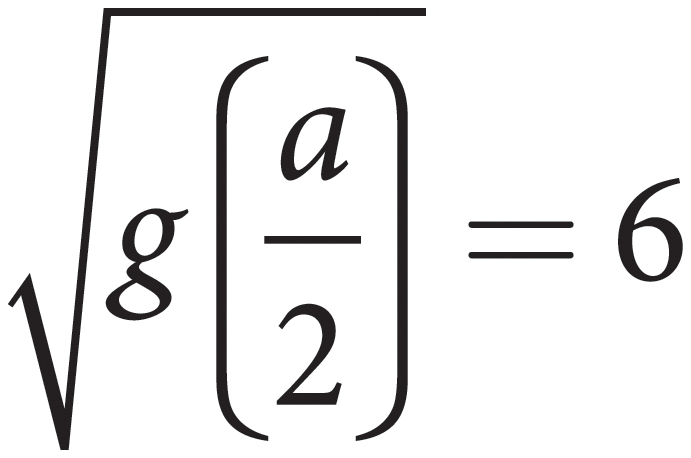 , what is the value of a ?
, what is the value of a ?
A) 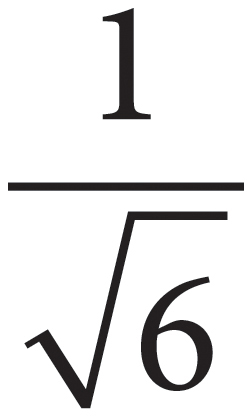
B) 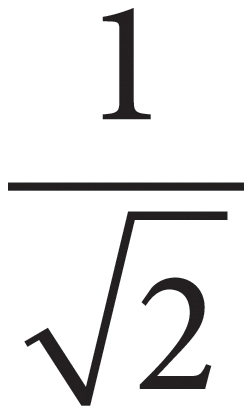
C) 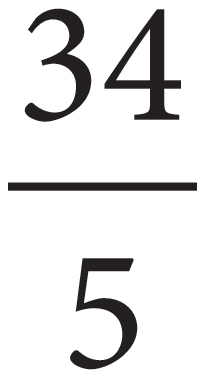
D) 
Here’s How to Crack It
The question asks for the value of a. This may look complicated, but just follow the directions. You know that g(x) = 5x + 2. You also know that 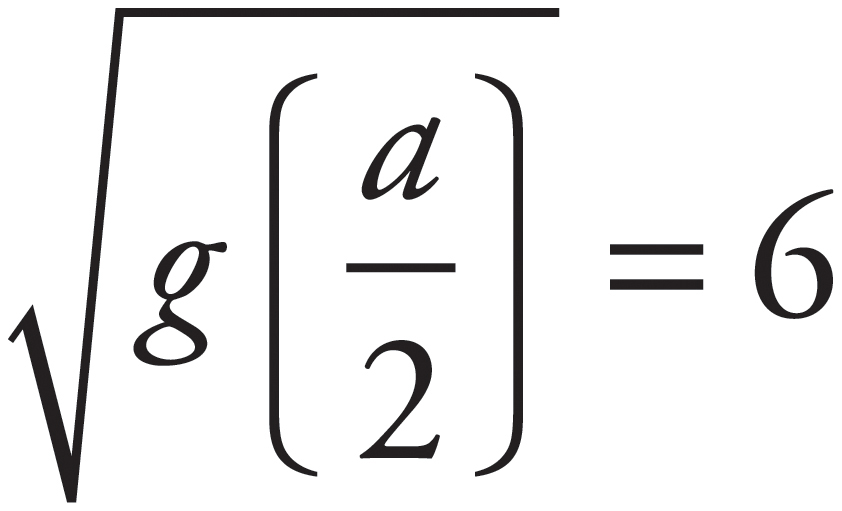 . First, get rid of the square root by squaring both sides. Now you have
. First, get rid of the square root by squaring both sides. Now you have 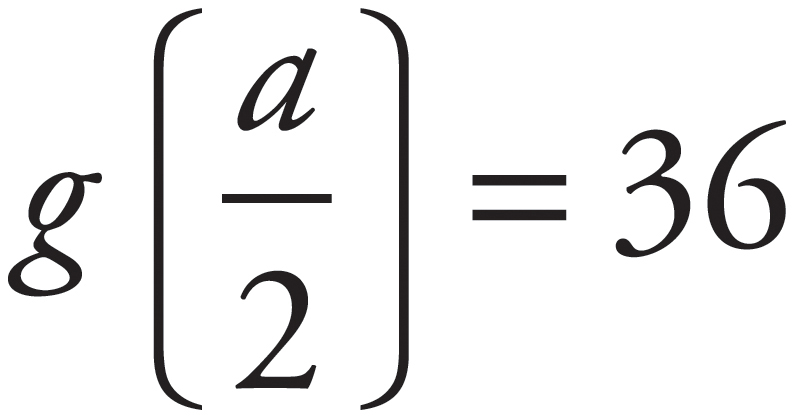 . Usually there’s an x inside the parentheses. Treat this the same. This statement says that g of some number equals 6. You also know that g of some number is the same as 5x + 2. So 5x + 2 = 36. Simplify and you get
. Usually there’s an x inside the parentheses. Treat this the same. This statement says that g of some number equals 6. You also know that g of some number is the same as 5x + 2. So 5x + 2 = 36. Simplify and you get 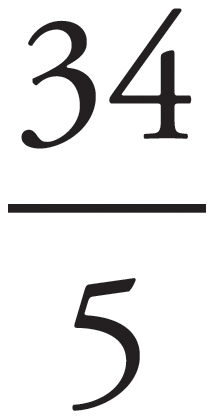 . Be careful here; you’re not done. You now know that
. Be careful here; you’re not done. You now know that 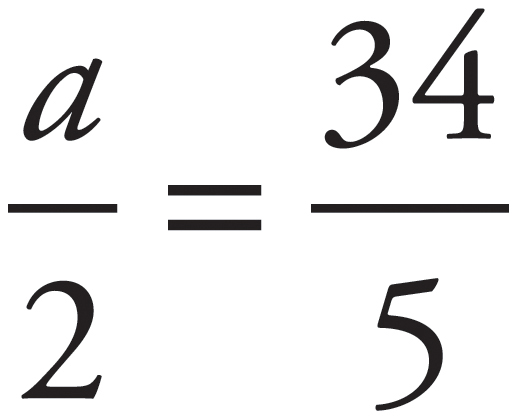 , so
, so 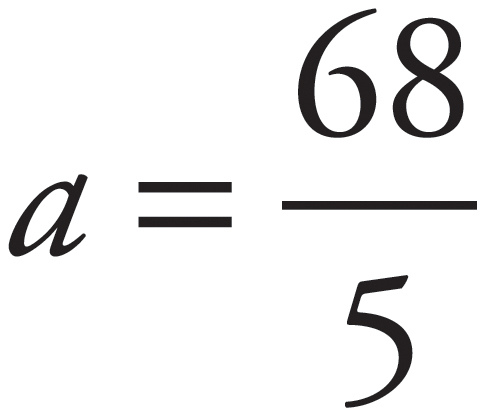 . The correct answer is (D).
. The correct answer is (D).

Another way the SAT can make functions more complicated is to give you two functions to deal with together. If you approach these problems one piece at a time, they will be easier to handle.
Here’s an example:

15. If f(g(a)) = 6, 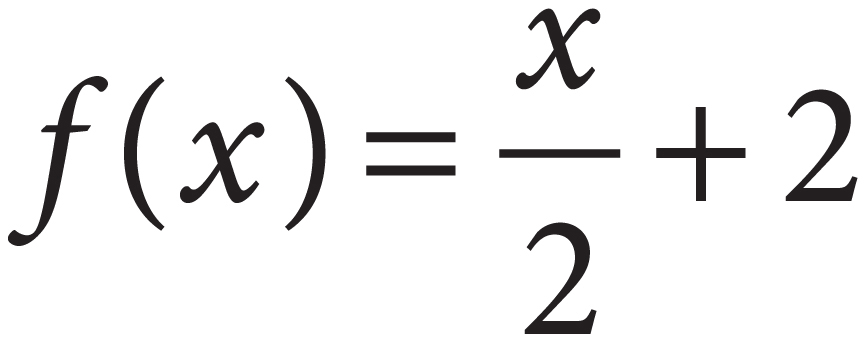 , and g(x) = |x2 − 10|, which of the following is a possible value of a ?
, and g(x) = |x2 − 10|, which of the following is a possible value of a ?
A) 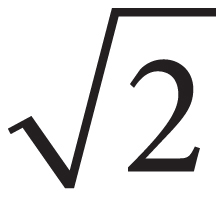
B) 2
C) 6
D) 18
Here’s How to Crack It
The question asks for a possible value of a. This is a great opportunity to Plug In the Answers! Take one of the middle answer choices and plug it in for a, and then work the problem one step at a time to see if f(g(a)) = 6. Try (B): if a = 2, then g(a) = |(2)2 − 10| = |4 − 10| = |−6| = 6. So,  . Since the problem states that f(g(a)) is supposed to equal 6, (B) is not correct.
. Since the problem states that f(g(a)) is supposed to equal 6, (B) is not correct.
If you don’t know which way to go next, just pick a direction. Try (A): if a  , then
, then  . So, f(g(a)) =
. So, f(g(a)) = 
 . The correct answer is (A).
. The correct answer is (A).

Sometimes you may see a word problem that describes a function and then asks you to “build a function” that describes the real-world situation presented in the problem. Take the following question, for example.


15. Rock climbing routes are rated on a numbered scale with the highest number representing the most difficult route. Sally tried a range of shoe sizes on each of several routes of varying difficulty and found that when she wore smaller shoes, she could climb routes of greater difficulty. If D represents the difficulty rating of a route Sally successfully climbed and s represents the size of the shoes she wore on such a route, then which of the following could express D as a function of s ?
A) D(s) = s2
B) D(s) = 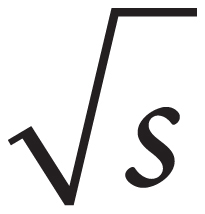
C) D(s) = s − 3.5
D) D(s) = 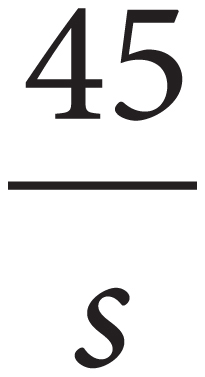
Here’s How to Crack It
The question asks for a function that best represents a situation. Start by thinking about the relationship described in the question: the smaller the shoes, the greater the difficulty. This is an inverse relationship. So, look for an inverse function. Only (D) is an inverse function.
If you aren’t sure, try plugging in numbers to try it out. Plug in s = 8 and then s = 10 to see if the result for D is smaller when you use a larger shoe size. Since only (D) results in a smaller difficulty for a larger shoe size, the correct answer is (D).

Why did math folks come up with functions? To graph them, of course! When you put in a value for x, and your machine (or function) spits out another number, that’s your y. You now have an ordered pair. Functions are just another way to express graphs. Knowing the connection between functions and graphs is useful, because you will most likely see questions involving graphs on the SAT.
A coordinate plane, or the xy-plane, is made up of two number lines that intersect at a right angle. The horizontal number line is called the x-axis, and the vertical number line is the y-axis.
The four areas formed by the intersection of the axes are called quadrants. The location of any point can be described with a pair of numbers (x, y), just the way you would point on a map: (0, 0) are the coordinates of the intersection of the two axes (also called the origin); (1, 2) are the coordinates of the point one space to the right and two spaces up; (−1, 5) are the coordinates of the point one space to the left and five spaces up; (−4, −2) are the coordinates of the point four spaces to the left and two spaces down. All of these points are located on the following diagram.

Some of the questions on the SAT may require you to know certain properties of lines on the xy-plane. Let’s talk about them.
You may be asked if a point is on a line or on the graph of any other equation. Just plug the coordinates of the point into the equation of the line to determine if that point makes the equation a true statement.

3. In the xy-plane, which of the following ordered pairs is a point on the line y = 2x − 6 ?
A) (6, 7)
B) (7, 7)
C) (7, 8)
D) (8, 7)
Here’s How to Crack It
The question asks for point that is on the given line. Plug In the Answers, starting with (B). The (x, y) point is (7, 7), so plug in 7 for x and 7 for y. The equation becomes 7 = 2(7) − 6 or 7 = 8. This isn’t true, so eliminate (B). The result was very close to a true statement, and the point in (C) has the same x-coordinate and a larger y-coordinate, so try that next. Because 8 = 2(7) − 6, the correct answer is (C).

You always read a graph from left to right. As you read the graph, how much the line goes up or down is known as the slope. Slope is the rate of change of a line and is commonly known as “rise over run.” It’s denoted by the letter m. Essentially, it’s the change in the y-coordinates over the change in x-coordinates and can be found with the following formula:
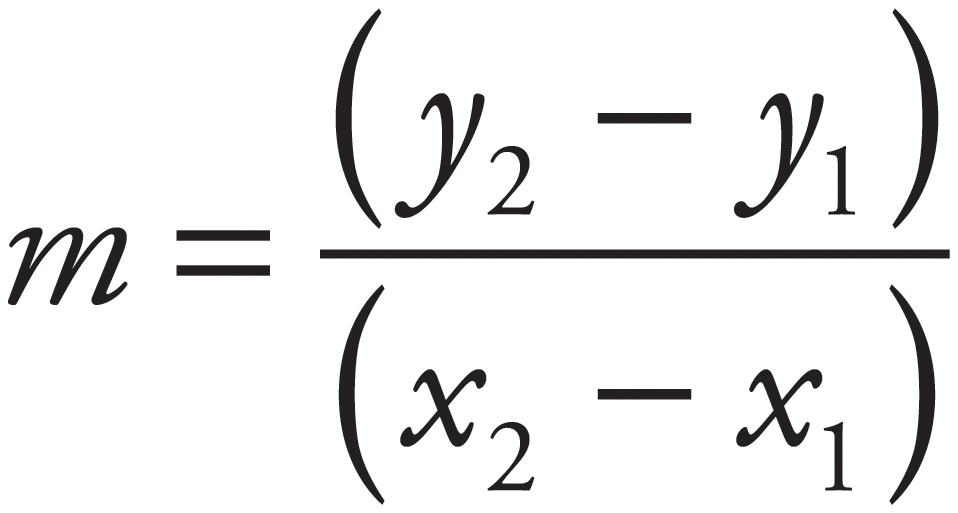
This formula uses the points (x1, y1) and (x2, y2).
For example, if you have the points (2, 3) and (7, 4), the slope of the line created by these points would be

So the slope of a line with points (2, 3) and (7, 4) would be  , which means that every time you go up 1 unit, you travel to the right 5 units.
, which means that every time you go up 1 unit, you travel to the right 5 units.
The equation of a line can take multiple forms. The most common of these is known as the slope-intercept form. If you know the slope and the y-intercept, you can create the equation of a given line. A slope-intercept equation takes the form y = mx + b, where m is the slope and b is the y-intercept (the point where the function crosses the y-axis).
Let’s say that you know that a certain line has a slope of 5  and a y-intercept of 3. The equation of the line would be y = 5x + 3. You could graph this line simply by looking at this form of the equation. First, draw the y-intercept, (0, 3). Next, plug in a number for x and solve for y to get a coordinate pair of a point on the line. Then connect the point you just found with the y-intercept you already drew, and voilà, you have a line. If you want more points, you can create a table such as the following:
and a y-intercept of 3. The equation of the line would be y = 5x + 3. You could graph this line simply by looking at this form of the equation. First, draw the y-intercept, (0, 3). Next, plug in a number for x and solve for y to get a coordinate pair of a point on the line. Then connect the point you just found with the y-intercept you already drew, and voilà, you have a line. If you want more points, you can create a table such as the following:
|
x |
y |
|
−2 |
−7 |
|
−1 |
−2 |
|
0 |
3 |
|
1 |
8 |
Take a look at the finished product:
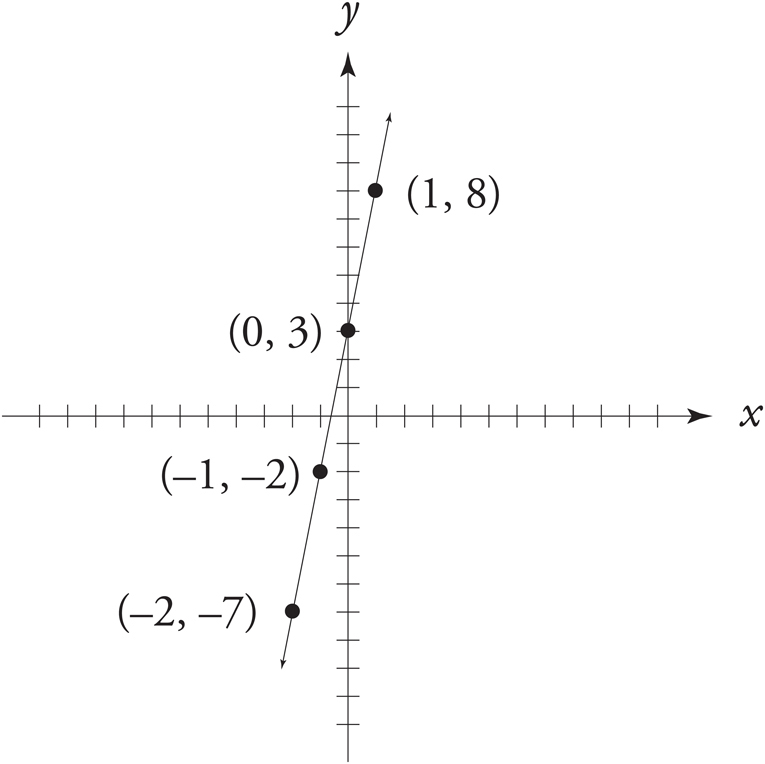
One way the SAT can test your understanding of lines is to show you a graph and ask you which equation describes that graph.
Here’s an example:

4.
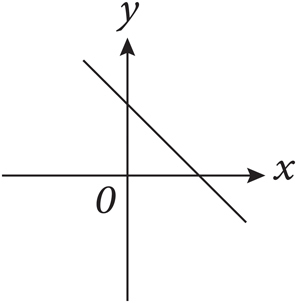
Which of the following could be the equation of the line represented in the graph above?
A) y = 2x + 4
B) y = 2x − 4
C) y = −2x − 1
D) y = −2x + 4
Here’s How to Crack It
The question asks for the equation of a line based on the graph. Remember that the equation of a line is y = mx + b, where m is the slope and b is the y-intercept. Look at the graph and think about what the equation should look like. Since the line is sloping downward, it should have a negative slope, so you can eliminate (A) and (B). Next, since the line has a positive y-intercept, you can eliminate (C). The correct answer is (D).

Another way the equation of a line can be written is the standard form of Ax + By = C, where A, B, and C are constants and A and B do not equal zero. The test writers will sometimes present equations in this form in the hopes that you will waste time putting it in slope-intercept form. If you know what to look for, the standard form can be just as useful as the slope- intercept form.
In standard form Ax + By = C:
the slope of the line is 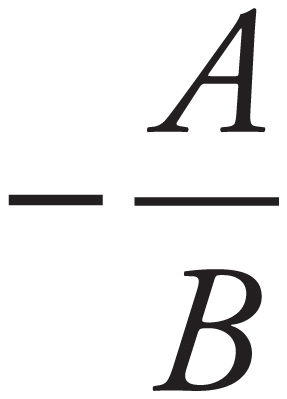
the y-intercept of the line is 
the x-intercept of the line is 
The equation in the previous example would be −5x + y = 3 when written in the standard form. Using the information above, you can see that:
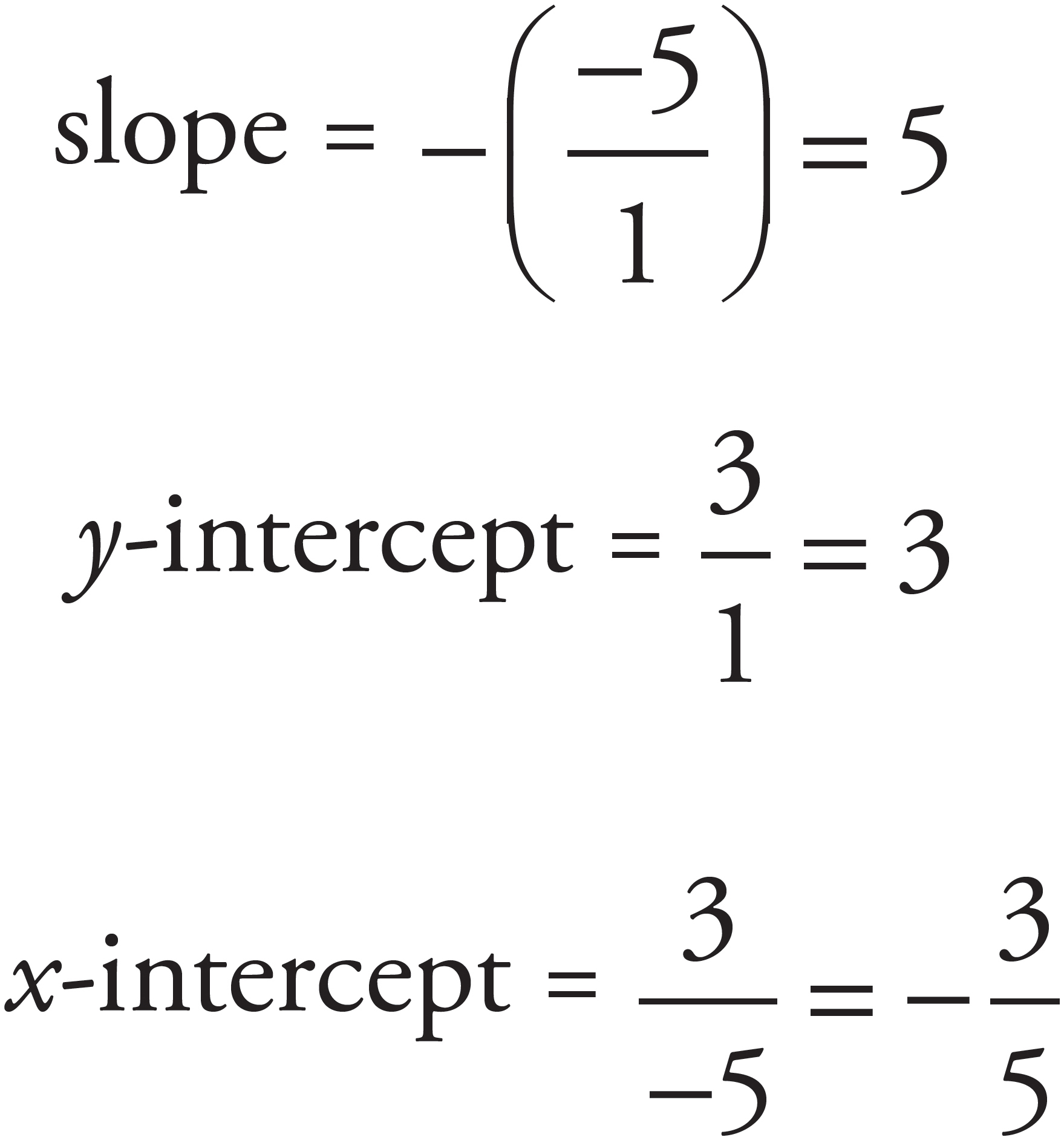
The answers for the slope and the y-intercept were the same as when the slope-intercept form was used. Depending on the form of the equation in the question or in the answers, knowing these line equation facts can help save time on the test.
Let’s look at how this may be tested.


15. The graph of which of the following equations is parallel to the line with equation y = −3x − 6 ?
A) x − 3y = 3
B) 
C) 
D) 
Here’s How to Crack It
The question asks for the equation of a line that has a slope parallel to the slope of the line given in the problem. In the form y = mx + b, m represents the slope. So, the slope of the equation given in the problem, y = −3x − 6, is −3. All you need to do now is find which choice also has a slope of −3.
One way to do that would be to rewrite each answer into the y = mx + b form. However, if you notice that each equation is presented in the Ax + By = C form, you know that the slope in that form is equal to  . So, check each answer choice: The slope of (A) is
. So, check each answer choice: The slope of (A) is  , or
, or  ; the slope of (B) is
; the slope of (B) is 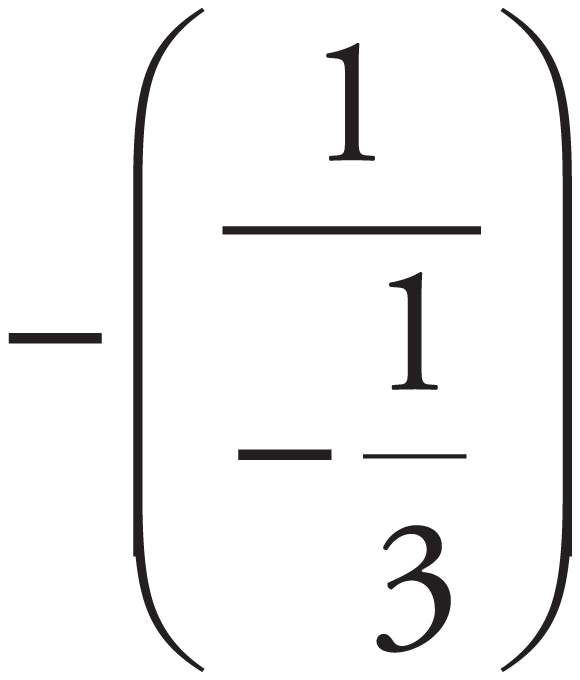 or 3; the slope of (C) is
or 3; the slope of (C) is 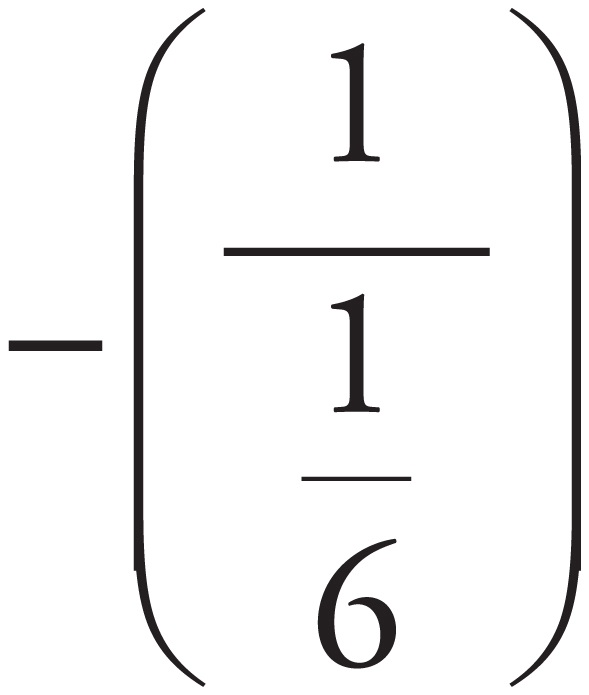 , or −6; and the slope of (D) is
, or −6; and the slope of (D) is 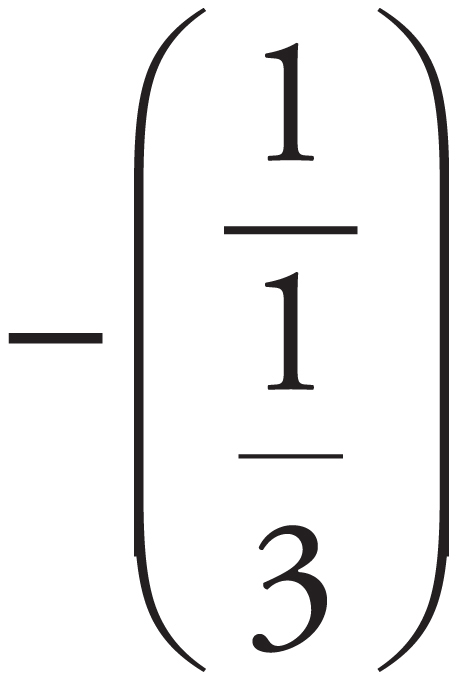 , which equals −3. The correct answer is (D).
, which equals −3. The correct answer is (D).

So now you know that parallel lines have the same slope. Whenever the SAT brings up perpendicular lines, just remember that a perpendicular line has a slope that is the opposite reciprocal of the other line’s slope. For instance, if the slope of a line is 3, then the slope of a line perpendicular to it would be  . Combine this with the skills you’ve already learned to attack a problem about perpendicular lines.
. Combine this with the skills you’ve already learned to attack a problem about perpendicular lines.
Here’s an example:


18. Which of the following is the graph of a line perpendicular to the line defined by the equation 2x + 5y = 10 ?

Here’s How to Crack It
The question asks for a line perpendicular to the line 2x + 5y = 10. Therefore, you need to find the slope of the line and then take the negative reciprocal to find the slope. You can convert the equation into the y = mx + b format in order to find the slope, or simply remember that when an equation is presented in the form Ax + By = C, the slope is equal to  . So the slope of this line is
. So the slope of this line is 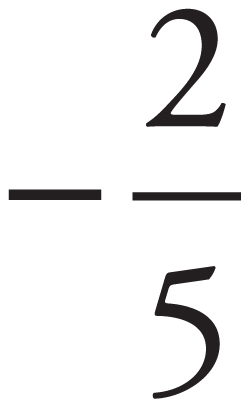 , and the slope of a perpendicular line would be
, and the slope of a perpendicular line would be  .
.
Look at the answer choices for one with a positive (upward) slope. Choices (B) and (C) slope downward, so eliminate them. Next, use points in the graph to find the slope of each answer. Eliminate (A); it has points at (1, 0) and (2, 5), for a slope of 5—too steep. The only remaining choice is (D), so the correct answer is (D).

In the previous chapters on algebra, we discussed equations with one or multiple solutions. Now imagine an equation in which any value of x would create a viable solution to the equation.
x + 3 = x + 3
In this case, it is fairly obvious that any number you choose to put in for x will create a true equation. But what does it mean when two lines have infinitely many solutions? Let’s look at an example.


20.
gx − hy = 78
4x + 3y = 13
In the system of equations above, g and h are constants. If the system has infinitely many solutions, what is the value of gh ?
A) −432
B) −6
C) 6
D) 432
Here’s How to Crack It
The question asks for the value of gh, where g and h are coefficients in the system of equations. This question may have you scratching your head and moving on to the next question, but explore what you can do to solve this before you decide it’s not worth your time. You may be surprised by how easy it is to solve a problem like this.
When they say that these equations have infinitely many solutions, what they are really saying is that these are the same equation, or that one equation is a multiple of the other equation. In other words, these two equations represent the same line. With that in mind, try to determine what needs to be done to make these equations equal. Since the right side of the equation is dealing with only a constant, first determine what you would need to do to make 13 equal to 78.
In this case, you need to multiply 13 by 6. Since you are working with equations, you need to do the same thing to both sides of the equation in order for the equation to remain equal.
6(4x + 3y) = 6 × 13
24x + 18y = 78
Since both equations are now equal to 78, you can set them equal to one another, giving you this equation:
24x + 18y = gx − hy
You may know that when you have equations with the same variables on each side, the coefficients on those variables must be equal, so you can deduce that g = 24 and h = −18. (Be cautious when you evaluate this equation. The test writers are being sneaky by using addition in one equation and subtraction in another.) Therefore, gh equals 24 × −18 = −432. The correct answer is (A).

You saw above that a system of equations can have infinitely many solutions. When solving equations, you likely assume, as most people do, that there will be at least one solution to the equation, but that is not always the case. Look at the following example.
3x − 6 = 3x + 7
If you solve this equation, you will find that −6 = 7. Since −6 can never equal 7, there is no value of x that can be put into this equation to make it true. In this case, the equation has no solutions.
What does it mean if two equations of lines have no solutions? Here’s one to try.

5. Which of the following accurately represents the set of solutions for the lines 6x + 12y = −24 and 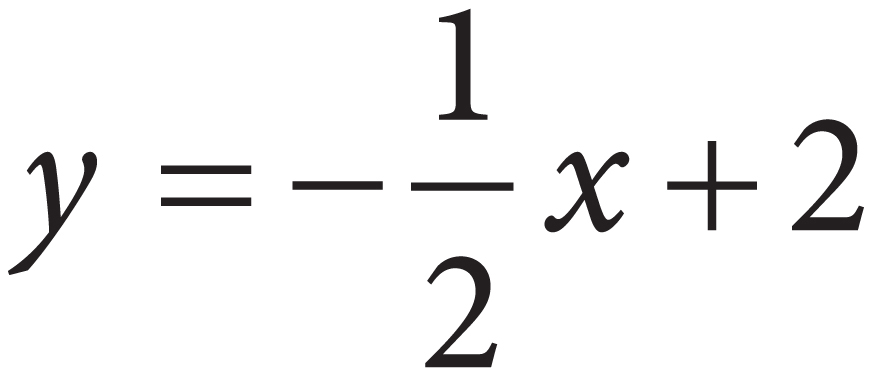 ?
?
A) (0, −4)
B) (0, 4)
C) There are no solutions.
D) There are infinitely many solutions.
Here’s How to Crack It
The question asks for the solution to the system of equations. If the lines intersect, this will be the point of intersection. The answers in (C) and (D), though, suggest that the lines may be the same or parallel. Rather than plugging in the points in (A) and (B), look for a way to compare slopes. Start by putting the first line into y = mx + b form: 12y = −6x − 24. Divide the whole equation by 12, so 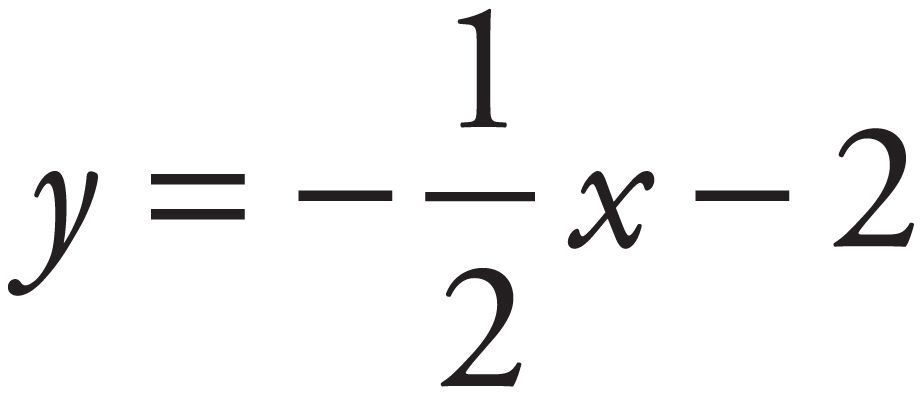 . Since these lines have the same slope but different y-intercepts, the lines are parallel, and they will never intersect. Therefore, the correct answer is (C).
. Since these lines have the same slope but different y-intercepts, the lines are parallel, and they will never intersect. Therefore, the correct answer is (C).
If two lines had different slopes, the lines would intersect at a single point such as (A) or (B). If the equations were identical, then they would be the same line and therefore have infinitely many solutions.

Earlier in this book you learned how to find the solution to a system of equations. There are several ways to do this, including stacking up the equations and adding or subtracting, setting them equal, or even Plugging In the Answers. The SAT may also ask about the intersection of two graphs in the xy-plane, which is a similar idea.
Let’s try one:


14. In the xy-plane, which of the following is a point of intersection between the graphs of y = x + 2 and y = x2 + x − 2 ?
A) (0, −2)
B) (0, 2)
C) (1, 0)
D) (2, 4)
Here’s How to Crack It
The question asks for the point of intersection for two equations. This is a point that is on the graphs of both equations. Therefore, the point would actually work if plugged into the equation of the line and the equation of the parabola.
So, use PITA by testing the answer choices: Start with one of the answers in the middle and plug in the point to each equation to see if it is true. The correct point of intersection will work in both functions. Try (C) in the first equation: Does 0 = (1) + 2? No. So, (C) is not the answer. Try (D) in the first equation: Does 4 = (2) + 2? Yes. So, try (D) in the second equation: Does 4 = (2)2 + 2 − 2? Yes. Since (2, 4) works in both equations, the correct answer is (D).

The midpoint formula gives the midpoint of ST, with points S (x1, y1) and T (x2, y2). It’s simply the average of the x-coordinates and the y-coordinates. In our example, the midpoint would be  .
.
Let’s see an example of a midpoint problem.

2. In the xy-plane, what is the midpoint of the line segment with endpoints at (3, 4) and (0, 0) ?
A) (1.5, 2)
B) (5, 0)
C) (2.5, 0)
D) (3.5, 3.5)
Here’s How to Crack It
The question asks for the midpoint of the line segment formed by two points in the coordinate plane. You can use the formula for the midpoint of a line segment: 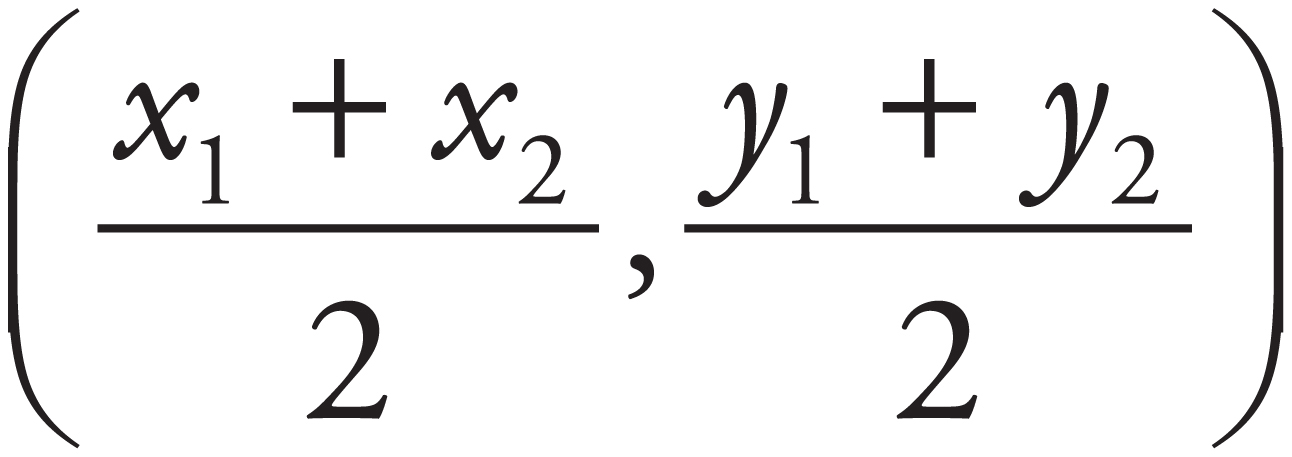 . If you forget it, try to remember that you are just taking the average of the x-coordinates of the two points to get the x-coordinate of the midpoint, and doing the same for the y-coordinates. For the x-coordinates, the average of 3 and 0 is (3 + 0) ÷ 2 = 1.5. Only one answer has this for the x-coordinate: (A). Don’t waste time calculating the y-coordinate if you don’t have to! The correct answer is (A).
. If you forget it, try to remember that you are just taking the average of the x-coordinates of the two points to get the x-coordinate of the midpoint, and doing the same for the y-coordinates. For the x-coordinates, the average of 3 and 0 is (3 + 0) ÷ 2 = 1.5. Only one answer has this for the x-coordinate: (A). Don’t waste time calculating the y-coordinate if you don’t have to! The correct answer is (A).

The distance formula looks quite complicated. The easiest way to solve the distance between two points is to connect them and form a triangle. Then use the Pythagorean Theorem. Many times, the triangle formed is one of the common Pythagorean triplets (3-4-5 or 5-12-13).
Let’s try a distance formula question.


3. Which of the following points lies the greatest distance from the origin in the xy-plane?
A) 
B) (−1, −1)
C) 
D) (0, 1)
Here’s How to Crack It
The question asks for a point that will be farthest away from the origin. Draw the line between the origin and the point in each answer choice and use the technique described above to see which has the longest hypotenuse. Choice (A) would look like this:

This creates a triangle with legs of 1.5 and 1.5; the hypotenuse (the distance from the origin) would then be  , or about 2.12. Do the same with (B), (C), and (D). The distance of (B) would be
, or about 2.12. Do the same with (B), (C), and (D). The distance of (B) would be 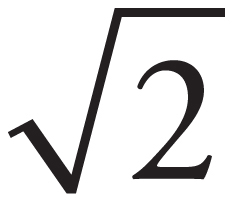 , or about 1.4. Choices (C) and (D) lie in a straight line left and up from the origin, respectively, so the distance of (C) is 0.5, and the distance of (D) is 1. The distance farthest from the origin is about 2.12, so the correct answer is (A).
, or about 1.4. Choices (C) and (D) lie in a straight line left and up from the origin, respectively, so the distance of (C) is 0.5, and the distance of (D) is 1. The distance farthest from the origin is about 2.12, so the correct answer is (A).

We’ve talked about y-intercepts in the discussion of the slope-intercept form of a line, and we talked about solutions when we covered systems of equations. But what about x-intercepts, or the solution for just one equation? A solution, sometimes called a root, is simply any point where a line or curve intersects the x-axis. Similarly, just as the y-intercept was the point where a line crossed the y-axis, an x-intercept is a point where a line or curve intersects the x-axis.
Keep these terms straight and you’ll be in great shape!
Let’s try a question that requires knowledge of intercepts and distance in the xy-plane.

15. What is the distance between the x-intercept and the y-intercept of the line 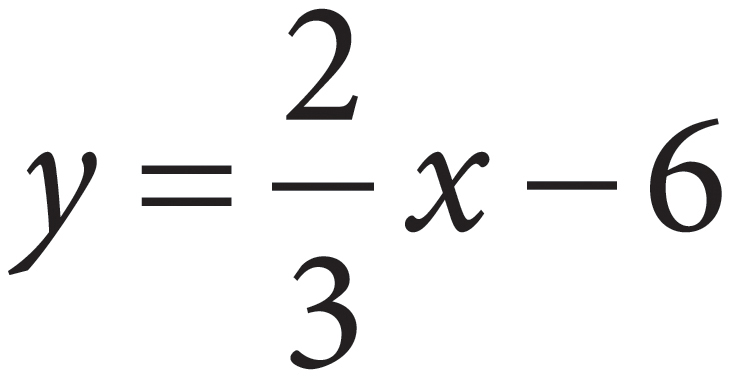 ?
?
A) 9
B) 15
C) 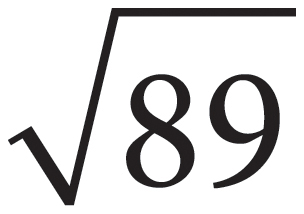
D) 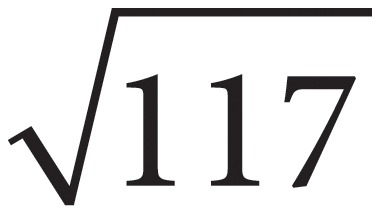
Here’s How to Crack It
The question asks for the distance between the intercepts of a line, so start by finding the x- and y-intercepts of the line. When an equation is in y = mx + b form, the y-intercept is b. So, the y-intercept is at the point (0, −6). To find the x-intercept, you need a point where the y value is 0, just like how the y-intercept has an x value of 0. So, plug in 0 for y in the equation: 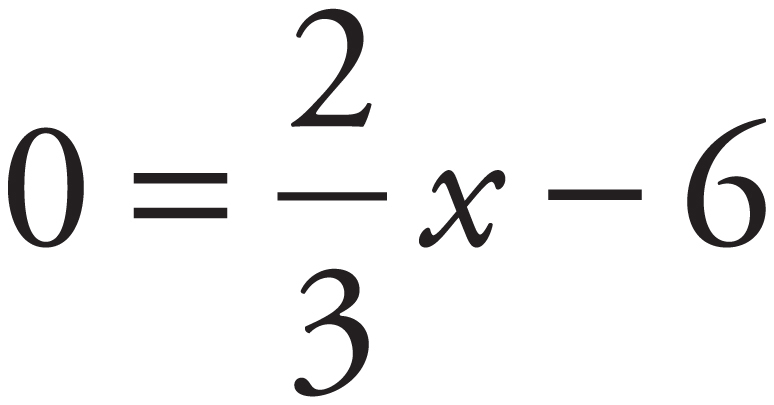 , so
, so 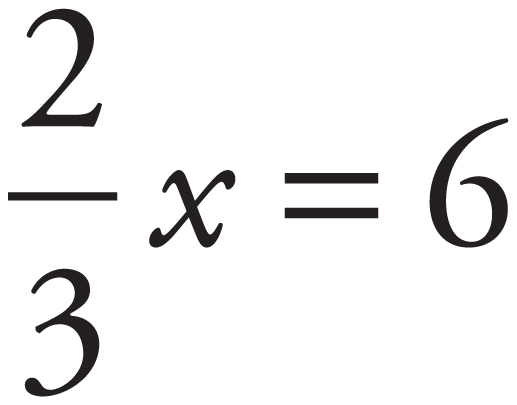 , and
, and 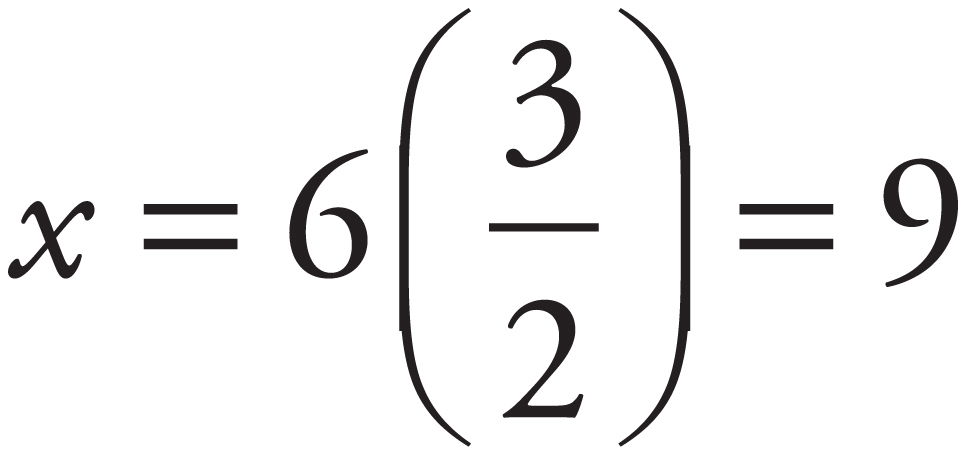 . The x-intercept, then, is (9, 0).
. The x-intercept, then, is (9, 0).
Now draw a right triangle with a base of 9 (the difference between the x-coordinates) and a height of 6 (the difference between the y-coordinates), and use the Pythagorean Theorem (more on this in the next chapter) to calculate the distance: 62 + 92 = c2, so c2 = 117, and the distance is  . The correct answer is (D).
. The correct answer is (D).

Sometimes, instead of seeing the typical y = mx + b equation, or something similar, you’ll see f(x) = mx + b. Look familiar? Graphs are just another way to show information from a function. Functions show information algebraically and graphs show functions geometrically (as pictured).
Here’s an example. The function f(x) = 3x − 2 is shown graphically as the following:
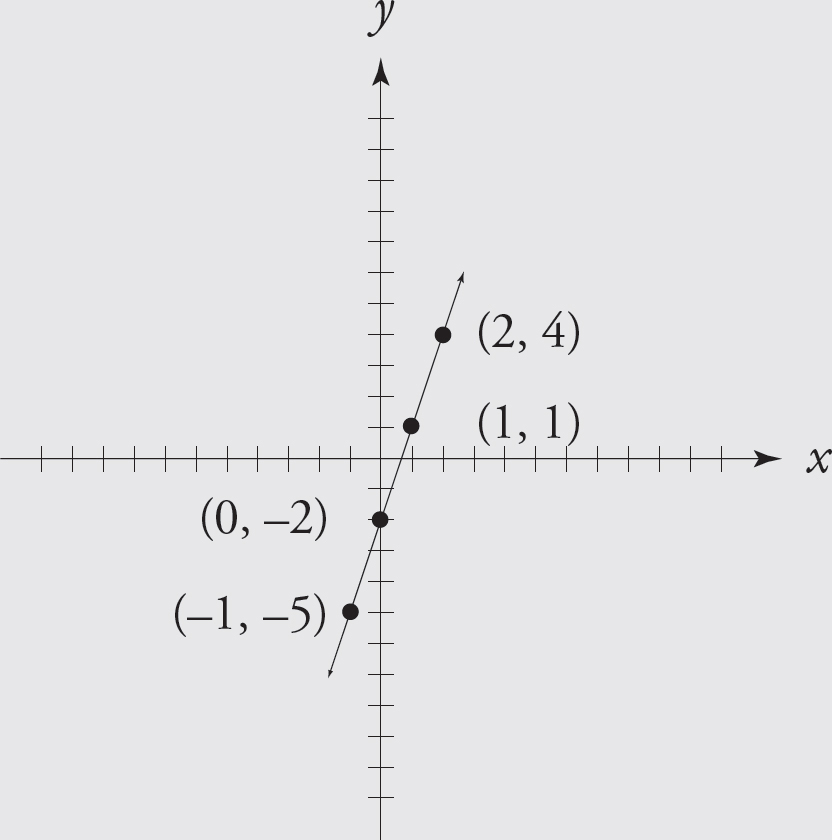
The reason the SAT includes function questions is to test whether you can figure out the relationship between a function and its graph. To tackle these questions, you need to know that the independent variable, the x, is on the x-axis, and the dependent variable, the f(x), is on the y-axis. For example, if you see a function of f(x) = 7, then you need to understand that this is a graph of a horizontal line where y = 7.
One type of function question you might be asked is how the graph of a function would shift if you added a value to it.
Here is a quick guide for the graph of f(x) = x2, as seen below:

For f(x) + c, where c is a constant, the graph will shift up c units, as shown in the diagram below:
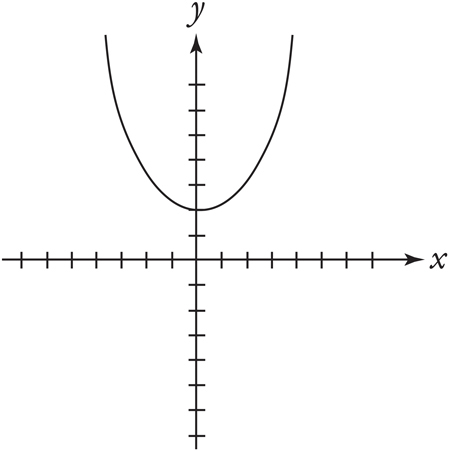
Conversely, f(x) − c will shift the graph down by c units:

For f(x + c), the graph will shift c units to the left:
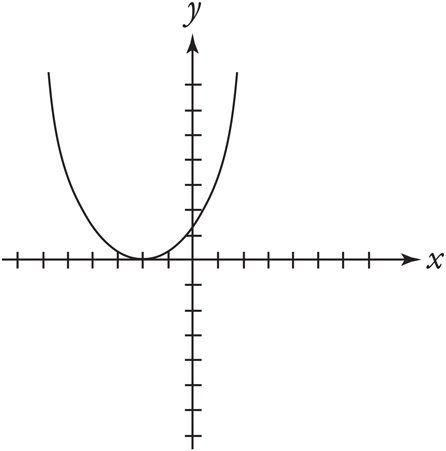
For f(x − c), the graph will shift to the right by c units:
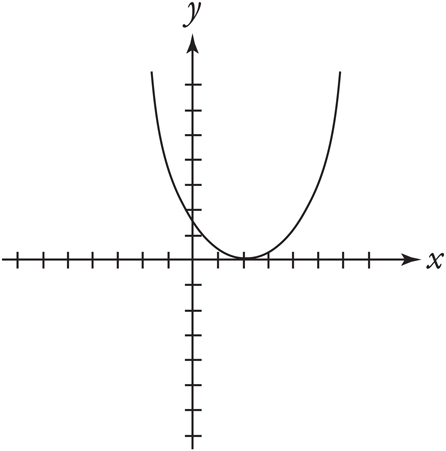
You may have realized how easy these problems would become if you simply put them into your graphing calculator. If calculator use is allowed, type in the function; if not, remember the four simple rules for transforming graphs.
You can also plug in points to find the correct graph.
The SAT will ask questions using two different forms of the equation for a parabola.
The standard form of a parabola equation is:
y = ax2 + bx + c
In the standard form of a parabola, the value of a tells whether a parabola opens upwards or downwards (if a is positive, the parabola opens upwards, and if a is negative, the parabola opens downwards).
The vertex form of a parabola equation is:
y = a(x − h)2 + k
In the vertex form, the point (h, k) is the vertex of the parabola.
In vertex form, the value of a still indicates which way the parabola opens. Simply knowing what the vertex form looks like may help you answer a question, like the following example.


29.

Which of the following is an equivalent form of the equation of the graph shown in the xy-plane above, from which the coordinates of vertex V can be identified from constants in the equation?
A) y = (x − 2)2 − 16
B) y = x(x − 4) − 12
C) y = (x − 6)(x + 2)
D) y = (x + 6)(x − 2)
Here’s How to Crack It
The question asks for the equation that contains the coordinates of the vertex. The graph tells you that the vertex of the parabola is at about (2, −16). Only (A) has the numbers 2 and 16 in it, so it must be the correct answer. If more than one choice had these constants, you could use your knowledge of the vertex form. If you recognize that the question asks for the vertex form of the equation of the parabola, you can simply select (A), the only choice that actually uses that form. Finally, if you forget the form, you can multiply out the answers to see which of them matchs the original equation. Of course, the test writers have written the answers such that all but (D) are equivalent, so you would still have to guess from among the remaining three answer choices. No matter which approach you take, the correct answer is (A).

Knowing the vertex of a parabola can help you more easily answer questions about the minimum or maximum value a parabolic function will reach, or the x-value that results in that minimum or maximum y-value. Say the last question was a Grid-In on the No Calculator section that asked for the x-coordinate of the vertex. You couldn’t graph it to find the vertex, so you’d have to get it into vertex form. Here are the steps to do that.
To convert a parabola equation in the standard form to the vertex form, complete the square.
Make y = 0, and move any constants over to the left side of the equation.
Take half of the coefficient on the x-term, square it, and add it to both sides of the equation.
Convert the x terms and the number on the right to square form: (x − h)2.
Move the constant on the left back over to the right and set it equal to y again.
For the equation in the last question, you would make it 0 = x2 − 4x − 12. Add 12 to both sides to get 12 = x2 − 4x. You’d add 4 to both sides to get 16 = x2 − 4x + 4, and then convert the right side to the square form to get 16 = (x − 2)2. Finally, you’d move the 16 back over and set it equal to y to get y = (x − 2)2 − 16.
The SAT will also ask questions about the equation of a circle in the xy-plane.
The equation of a circle is:
(x − h)2 + (y − k)2 = r2
In the circle equation, the center of the circle is the point (h, k), and the radius of the circle is r.
Let’s look at a question that tests the use of the circle equation.


26. Which of the following is the equation of a circle with center (2, 0) and a radius with endpoint 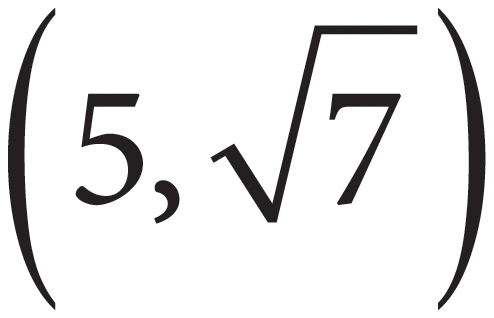 ?
?
A) (x − 2)2 + y2 = 4
B) (x + 2)2 + y2 = 4
C) (x − 2)2 + y2 = 16
D) (x + 2)2 + y2 = 16
Here’s How to Crack It
The question asks for the equation of a circle with certain properties. Start by building what you know of the circle formula. If the center is at point (2, 0), then the circle equation will be (x − 2)2 + (y − 0)2 = r2, or more simply, (x − 2)2 + y2 = r2. Choices (B) and (D) do not match, so eliminate them.
Now calculate the radius of the circle. Find the distance between points (2, 0) and  by drawing a right triangle. The base of the right triangle will be the difference between the x values of 5 and 2, so the base of the right triangle is 3. The height of the right triangle will be the difference between the y values, which is
by drawing a right triangle. The base of the right triangle will be the difference between the x values of 5 and 2, so the base of the right triangle is 3. The height of the right triangle will be the difference between the y values, which is  . Use the Pythagorean Theorem to find the hypotenuse of the triangle, which will be the distance between the points (and, therefore, the length of the radius). So,
. Use the Pythagorean Theorem to find the hypotenuse of the triangle, which will be the distance between the points (and, therefore, the length of the radius). So,  . Since you have the value of r2, which is 16, use POE to eliminate (A). The correct answer is (C).
. Since you have the value of r2, which is 16, use POE to eliminate (A). The correct answer is (C).

Just as you may be given a parabola in standard form and expected to convert it into vertex form, you may also be given an equation for a circle that is not in the form (x − h)2 + (y − k)2 = r2 and expect you to figure out the radius or center. To do so, you just need to complete the square as you did with the equation of a parabola. You will need to do it twice, though—once for the x-terms and again for the y-terms.
Got all of that? Now test your knowledge of functions and graphing with the following drills.
Use your new knowledge of functions and graphs to complete these questions, but don’t use your calculator! Answers and explanations can be found on this page.
3. Let the function f be defined such that f(x) = x2 − c, where c is a constant. If f(−2) = 6, what is the value of c ?
A) −10
B) −2
C) 0
D) 2
10. The graph of line l in the xy-plane passes through the points (2, 5) and (4, 11). The graph of line m has a slope of −2 and an x-intercept of 2. If point (x, y) is the point of intersection of lines l and m, what is the value of y ?
A) 
B) 
C) 1
C) 2

The figures above show the graphs of the functions f and g. The function f is defined by f(x) = 2x3 + 5x2 − x. The function g is defined by g(x) = f(x − h) − k, where h and k are constants. What is the value of hk ?
A) −2
B) −1
C) 0
D) 1
Calculator use is allowed on these questions, so use it wisely. Answers and explanations can be found on this page.
|
x |
y |
|
−3 |
−7 |
|
−1 |
−3 |
|
2 |
3 |
Based on the chart above, which of the following could express the relationship between x and y ?
A) y = x − 4
B) y = 2x − 1
C) y = 2x + 2
D) y = 3x − 3
13. Line l contains points (3, 2) and (4, 5). If line m is perpendicular to line l, then which of the following could be the equation of line m ?
A) x + 5y = 15
B) x + 3y = 15
C) 3x + y = 5
D) 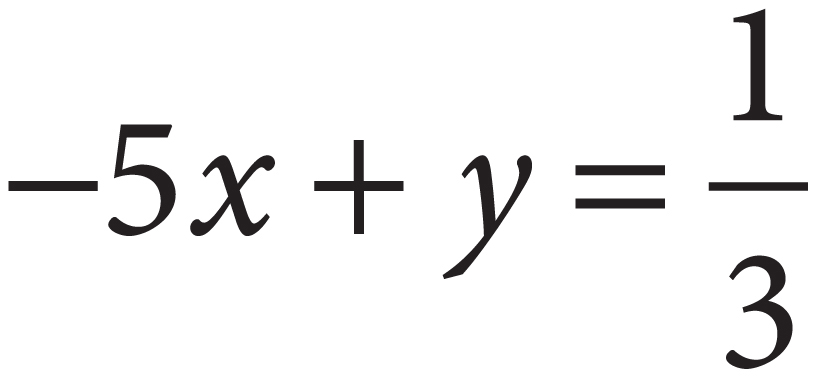
18. If f(x) = 2x2 + 4 for all real numbers x, which of the following is equal to f(3) + f(5) ?
A) f(4)
B) f(6)
C) f(10)
D) f(15)
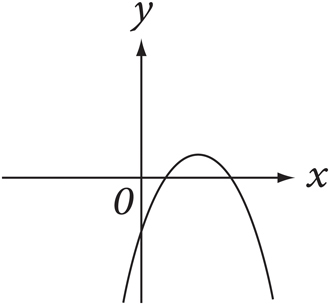
The graph of y = g(x) is shown in the figure above. If g(x) = ax2 + bx + c for constants a, b, and c, and if abc ≠ 0, then which of the following must be true?
A) ac > 1
B) c > 1
C) ac > 0
D) a > 0
26. Carlos and Katherine are estimating acceleration by rolling a ball from rest down a ramp. At 1 second, the ball is moving at 5 meters per second (m/s); at 2 seconds, the ball is moving at 10 m/s; at 3 seconds, the ball is moving at 15 m/s; and at 4 seconds, it is moving at 20 m/s. When graphed on an xy-plane, which equation best describes the ball’s estimated acceleration where y expresses speed and x expresses time?
A) y = 5x + 5
B) y = 25x
C) y = 5x
D) y = (4x + 1)2 + 5
3. B
The question asks for the value of c. Start by plugging in what you know into the given function. If f(x) = x2 − c, and f(−2) = 6, then plug in −2 for x in the function: f(−2) = (−2)2 − c. Solve and replace f(−2) with 6: 6 = 4 − c; 2 = −c; and c = −2. If you picked (A), you forgot that (−2)2 is positive 4. The correct answer is (B).
7. A
The question asks for the graph of the equation. Try plugging in a value for x to see if the graphs include that point. If x = 0, then y = 0, so (0, 0) should be a point on the graph. Unfortunately, this doesn’t eliminate any answer choices; try another value. If x = 1, then y = 2, so (1, 2) should be a point on the graph. Eliminate (B), (C), and (D). The correct answer is (A).
10. D
The question asks for the value of y. First, find the slope of line l by using the slope formula:  . Plug this slope and one of the points on line l into the slope-intercept form y = mx + b to solve for b, giving you the full equation of the line. If you use the point (2, 5), you get 5 = 3(2) + b or 5 = 6 + b, so b = −1. Therefore, the equation for line l is y = 3x − 1. For line m, the slope is given as −2, and the x-intercept is 2. Be very careful not to jump to the conclusion that the equation of line m is y = −2x + 2. In the form y = mx + b, the b is the y-intercept, not the x-intercept. The x-intercept is where y = 0, so you know that (2, 0) is a point on line m. Use this point and the slope to find the equation of line m in the same way you did for line l. 0 = −2(2) + b, so b = 4 and the equation is y = −2x + 4. Now set the x parts of the equations equal to find the point of intersection. If 3x − 1 = −2x + 4, then 5x = 5 and x = 1. Again, be careful! The question asked for the value of y ! Plug x = 1 into one of the line equations to find y. For line l, the equation becomes y = 3(1) − 1 = 3 − 1 = 2. The correct answer is (D).
. Plug this slope and one of the points on line l into the slope-intercept form y = mx + b to solve for b, giving you the full equation of the line. If you use the point (2, 5), you get 5 = 3(2) + b or 5 = 6 + b, so b = −1. Therefore, the equation for line l is y = 3x − 1. For line m, the slope is given as −2, and the x-intercept is 2. Be very careful not to jump to the conclusion that the equation of line m is y = −2x + 2. In the form y = mx + b, the b is the y-intercept, not the x-intercept. The x-intercept is where y = 0, so you know that (2, 0) is a point on line m. Use this point and the slope to find the equation of line m in the same way you did for line l. 0 = −2(2) + b, so b = 4 and the equation is y = −2x + 4. Now set the x parts of the equations equal to find the point of intersection. If 3x − 1 = −2x + 4, then 5x = 5 and x = 1. Again, be careful! The question asked for the value of y ! Plug x = 1 into one of the line equations to find y. For line l, the equation becomes y = 3(1) − 1 = 3 − 1 = 2. The correct answer is (D).
15. B
The question asks for the value of hk. The second graph moves down 1 and to the left 1. Remember that when a graph moves to the left, it is represented by (x + h), which would be the same as x − (−1). So h = −1. Because a negative k represents moving down, k = 1. Therefore, hk = (−1) × (1) = −1, and the correct answer is (B).
6. A
The question asks for the smallest value of f(x). This is a specific value, so you can use Plugging In the Answers. The numbers in the answer choices replace the f(x) portion of the equation, so you can just write out the rest of it, 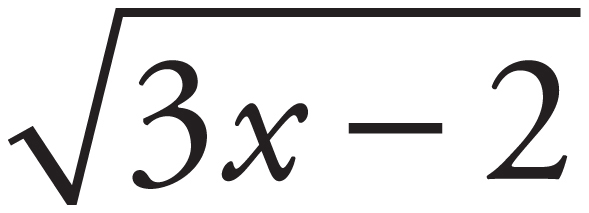 , next to each to see if it can be true. Start with (A) since you are looking for the smallest value of f(x). If
, next to each to see if it can be true. Start with (A) since you are looking for the smallest value of f(x). If  , then 0 = 3x − 2 when you square both sides. Add 2 to both sides to get 2 = 3x, and then divide both sides by 3. You get
, then 0 = 3x − 2 when you square both sides. Add 2 to both sides to get 2 = 3x, and then divide both sides by 3. You get  . Since this is a real value, the equation works, so the smallest value of f(x) is 0. The correct answer is (A).
. Since this is a real value, the equation works, so the smallest value of f(x) is 0. The correct answer is (A).
10. B
The question asks for the equation that best models a set of points. Plug in the values from the chart. Use the pair (−3, −7) from the top of the chart and eliminate answers that are not true: Choice (A) becomes −7 = −3 − 4, which is true. Keep it. Keep (B): −7 = 2(−3) − 1 is true. Get rid of (C), which becomes −7 = 2(−3) + 2: −7 does not equal −4. Get rid of (D): −7 = 3(−3) − 3. −7 does not equal −12. Now use another pair just to test (A) and (B). Using (−1, −3), (A) gives −3 = −1 − 4, which is not true, so eliminate it. The correct answer is (B).
13. B
The question asks for the equation of line m. First, find the slope of line l by using the slope formula:  . A line perpendicular to line l must have a slope that is the negative reciprocal of l’s slope. So, its slope should be
. A line perpendicular to line l must have a slope that is the negative reciprocal of l’s slope. So, its slope should be 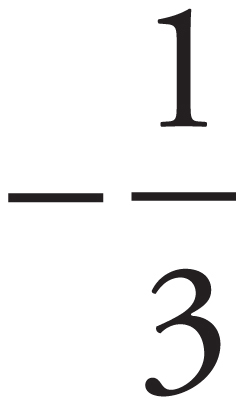 . In the standard form of a line Ax + By = C, the slope is
. In the standard form of a line Ax + By = C, the slope is  . Only (B) has a slope of
. Only (B) has a slope of  . If you didn’t remember the rule about the slope of perpendicular lines in standard form, you could have converted the answers to slope-intercept form and sketched out each of the lines to look for the answer that looked perpendicular to l. The correct answer is (B).
. If you didn’t remember the rule about the slope of perpendicular lines in standard form, you could have converted the answers to slope-intercept form and sketched out each of the lines to look for the answer that looked perpendicular to l. The correct answer is (B).
18. B
The question asks for the value of f(3) + f(5), so find the values of f(3) and f(5) separately: f(3) = 2(3)2 + 4 = 22 and f(5) = 2(5)2 + 4 = 54. So f(3) + f(5) = 76. Now evaluate the answers to see which one will give a result of 76. You can tell that f(4) will be between 22 and 54, so you can cross out (A). If you Ballpark (C) and (D), putting 10 or 15 in the function will give you a number bigger than 100, and you’re looking for 76, so (C) and (D) are too big. The correct answer is (B).
21. C
The question asks for a true statement about the coefficients of a quadratic equation based on its graph. Use the graph transformation rules. Whenever a parabola faces down, the quadratic equation has a negative sign in front of the x2 term. It always helps to Plug In! For example, if your original equation was (x − 2)2, putting a negative sign in front would make the parabola open downward, so you’ll have −(x − 2)2. If you expand it out, you get −x2 + 4x − 4. Notice that the value of a in this equation is −1. Also notice that the value of c is −4. This allows you to eliminate (B) and (D). Now you must plug in differently to distinguish between (A) and (C). Be warned: you must use fractions to help discern which is correct. Say the x-intercepts take place at x =  and x =
and x =  . Rewriting those two expressions means that the factors are
. Rewriting those two expressions means that the factors are  and
and 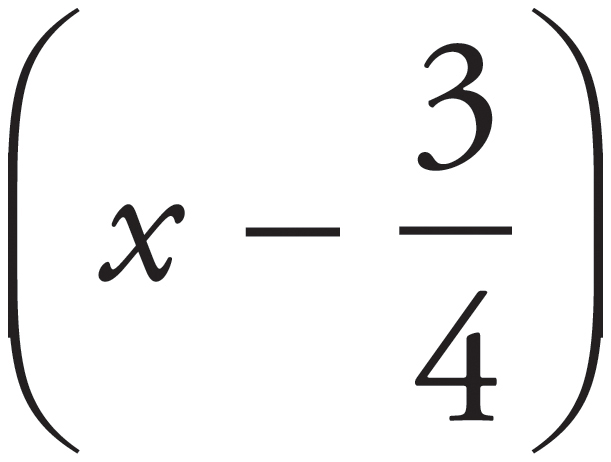 . If you use FOIL on the terms, you end up with x2 −
. If you use FOIL on the terms, you end up with x2 −  x +
x +  . Remember, the parabola opens downward, so you must multiply each term by −1 to yield −x2 +
. Remember, the parabola opens downward, so you must multiply each term by −1 to yield −x2 +  x −
x −  . Your values of a and c are now −1 and −
. Your values of a and c are now −1 and − , respectively. Multiply the two values and you get
, respectively. Multiply the two values and you get  , which allows you to eliminate (A). The correct answer is (C).
, which allows you to eliminate (A). The correct answer is (C).
26. C
The question asks for the equation that best models the ball’s acceleration. Figure out the points that will be on the graph from the data given: (0, 0), (1, 5), (2, 10), (3, 15), (4, 20). Draw a line through or close to these points to get an idea of what the graph will look like. Then use POE. The line is linear, not quadratic, so you can eliminate (D). It is also clear that the line begins at the origin, so the y-intercept will be 0. This will eliminate (A). A slope of 25 is far too big—Ballpark—so you can eliminate (B). The correct answer is (C).
Given a function, you put an x-value in and get an f(x) or y-value out.
Look for ways to use Plugging In and PITA on function questions.
For questions about the graphs of functions, remember that f(x) = y.
If the graph contains a labeled point or the question gives you a point, plug it into the equations in the answers and eliminate any that aren’t true.
The equation of a line can take two forms. In either form, (x, y) is a point on the line.
In slope-intercept form, y = mx + b, the slope is m and the y-intercept is b.
In standard form, Ax + By = C, the slope is 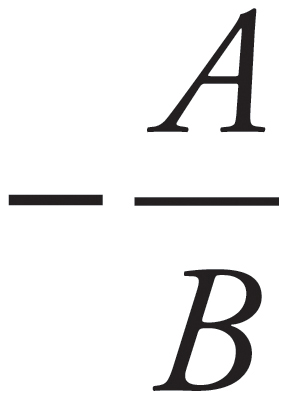 and the y-intercept is
and the y-intercept is  .
.
Given two points on a line, (x1, y1) and (x2, y2), the slope is 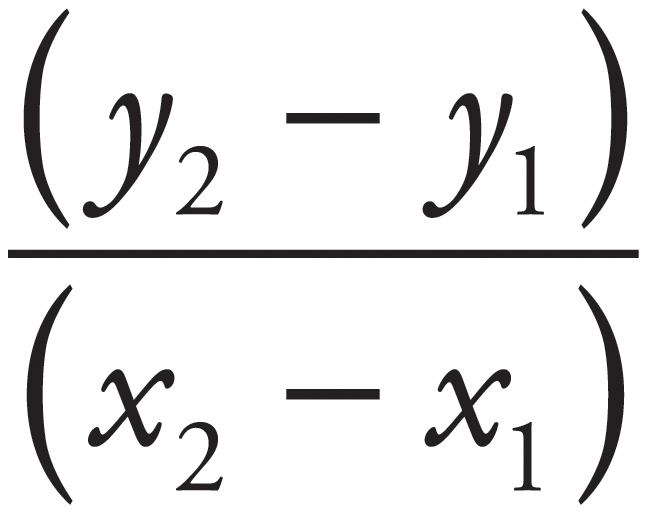 .
.
Two linear equations with infinitely many solutions actually represent the same line.
Parallel lines have the same slopes and no points of intersection.
Perpendicular lines have slopes that are opposite reciprocals and intersect at a right angle.
To find a point of intersection, plug the point into both equations to see if it works or graph the lines on your calculator when it is allowed.
To find the midpoint between two points, average the x-coordinates and average the y-coordinates.
To find the distance between two points, make them the endpoints of the hypotenuse of a right triangle and use the Pythagorean Theorem.
The roots of a function, also known as solutions, zeroes, or x-intercepts, are the points where the graph crosses the x-axis and where y = 0.
Graphs of functions can be moved up or down if a number is added to or subtracted from the function, respectively. They can move left if a number is added inside the parentheses of the function or move right if a number is subtracted inside the parentheses.
The vertex form of a parabola equation is y = a(x − h)2 + k, where (h, k) is the vertex. To get a parabola in the standard form into vertex form, complete the square.
The standard form of a circle equation is (x − h)2 + (y − k)2 = r2, where (h, k) is the center and r is the radius. To get a circle equation into the standard form, complete the square for both the x-terms and the y-terms.